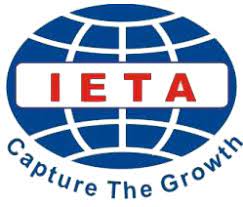What Teacher Confirmation Means to EFL Learners: High and Low Achievers’ Voices
 ), Eri Kurniawan(2), Delpani Selpia(3), Faza Lutfiyana(4),
), Eri Kurniawan(2), Delpani Selpia(3), Faza Lutfiyana(4), (1) Universitas Pendidikan Indonesia
(2) Universitas Pendidikan Indonesia
(3) Universitas Pendidikan Indonesia
(4) Universitas Pendidikan Indonesia
 Corresponding Author
Corresponding Author
Copyright (c) 2023 Lingua Didaktika: Jurnal Bahasa dan Pembelajaran Bahasa
DOI : https://doi.org/10.24036/ld.v17i2.124189
Full Text:
 Language : en
Language : en
Abstract
One of factors leading to the success of students’ learning is interpersonal relationships between teachers and students. One indicator contributing to this relationship is communication; one of its aspects is teacher confirmation, happening in the classroom interaction. The current study aims to reveal students’ perceptions on teacher confirmation as one of elements affecting student-teacher interpersonal relationships and how teacher confirmation affects their learning. This case study involved two high school students - high achiever and low achiever - selected from their English competence judged by the English teacher. Adapting Ellis’ Teacher Confirmation Scale (2000), sequenced and open-ended interview was conducted to both students in order to collect the data. The findings show that teacher confirmation exists in the classroom interaction and is perceived by both participants. Notwithstanding, teacher confirmation does not equally give positive impacts on students’ learning in general. In conclusion, high and low achiever responds teacher confirmation in different ways, resulted from factors which have not yet been explored in this study. Examining related intervening factors and the degree to which they affect how students perceive and respond to teacher confirmation is recommended for future research.
Keywords
References
Babonea, A., & Munteanu, A. (2012). Towards positive interpersonal relationships in the classroom. In International Conference of Scientific Paper Afases (pp. 1-4).
Bloom, B. S., Hastings, J. T., & Madaus, G. F. (1971). Handbook on formative and summative evaluation of student learning. New York: McGrawHill.
Brinkworth, M. E., McIntyre, J., Juraschek, A. D., & Gehlbach, H. (2017). Teacher-student relationships: The positives and negatives of assessing both perspectives. Journal of Applied Developmental Psychology, 55, 24-38.
Buber, M. (1957). Distance and relation. Psychiatry, 20, 97-104.
Campbell, L. C., Eichhorn, K. C., Basch, C., & Wolf, R. (2009). Exploring the relationship between teacher confirmation, gender, and student effort in the college classroom. Human Communication, 12(4), 447-464.
Croucher, S. M., Rahmani, D., Galy-Badenas, F., Zeng, C., Albuquerque, A., Attarieh, M., & Nshom, E. N. (2021). Exploring the relationship between teacher confirmation and student motivation: The United States and Finland. Intercultural Competence Past, Present and Future: Respecting the Past, Problems in the Present and Forging the Future, 101-120.
Dailey, R. M. (2010). Testing components of confirmation: How acceptance and challenge from mothers, fathers, and siblings are related to adolescent self-concept. Communication Monographs, 77, 592–617.
Dobrescu, T., & Lupu, G. S. (2015). The Role of Nonverbal Communication in the Teacher-pupil relationship. Procedia-Social and Behavioral Sciences, 180, 543-548.
Eiss, A. B. (1969). Behavioral objectives in the affective domain. Washington, D. C.: National Science Supervisors Association. Communication Education, 62, 191–209.
Ellis, K. (2000). Perceived teacher confirmation. The development and validation of an instrument and two studies of the relationship to cognitive and affective learning. Human Communication Research, 26(2), 264-291.
Ellis, K. (2004). The impact of perceived teacher confirmation on receiver apprehension, motivation, and learning. Communicat. Educat. 53, 1–20.
Frymier, A. B. (1993). The impact of teacher immediacy on students' motivation: Is it the same for all students?. Communication Quarterly, 41(4), 454-464.
Frymier, A. B., & Houser, M. L. (2000). The teacher‐student relationship as an interpersonal relationship. Communication education, 49(3), 207-219.
Gabry´s-Barker, D., and Gałajda, D. (eds) (2016). Positive psychology perspectives on foreign language learning and teaching. New York, NY: Springer.
Gao, Y. (2021). Toward the role of language teacher confirmation and stroke in EFL/ESL students’ motivation and academic engagement: a theoretical review. Frontiers in Psychology, 12, 723432.
Goldman, Z. W., & Goodboy, A. K. (2014). Making students feel better: Examining the relationships between teacher confirmation and college students' emotional outcomes. Communication Education, 63(3), 259-277.
Goldman, Z. W., Claus, C. J., & Goodboy, A. K. (2018). A conditional process analysis of the teacher confirmation–student learning relationship. Communication Quarterly, 66(3), 245-264.
Goldman, Z. W., Goodboy, A. K., & Weber, K. (2017). College students’ psychological needs and intrinsic motivation to learn: An examination of self-determination theory. Communication Quarterly, 65(2), 167-191.
Goodboy, A. K., and Myers, S. A. (2008). The effect of teacher confirmation on student communication and learning outcomes. Commun. Educat. 57, 153–179.
Goldman, S. E., & Gilmour, A. F. (2021). Educating students with Autism Spectrum Disorders: Is teacher certification area associated with academic outcomes?. Journal of Autism and Developmental Disorders, 51, 550-563.
Harper, R. G., Wiens, A. N., & Matarazzo, J. D. (1978). Nonverbal communication: The state of the art. John Wiley & Sons.
Horan, S. M., Houser, M. L., Goodboy, A. K., & Frymier, A. B. (2011). Students' early impressions of instructors: Understanding the role of relational skills and messages. Communication Research Reports, 28(1), 74-85.
Hsu, C. F. (2012). The influence of vocal qualities and confirmation of nonnative English-speaking teachers on student receiver apprehension, affective learning, and cognitive learning. Communication Education, 61(1), 4-16.
Johnson, Z. D., & LaBelle, S. (2020). Confirmation in the college classroom: The connections between teacher’s use of confirming messages and student’s own communicative behaviors. Communication Research Reports, 37(4), 172-181.
Laing, R. D. (1961). The self and others. New York: Pantheon.
Mazer, J. P. (2012). Development and validation of the student interest and engagement scales. Communication Methods and Measures, 6(2), 99-125.
Misbah, Z., Gulikers, J., Widhiarso, W., & Mulder, M. (2022). Exploring connections between teacher interpersonal behaviour, student motivation and competency level in competence-based learning environments. Learning Environments Research, 1-21.
Montgomery, B. M. (1988). Quality communication in personal relationships. In S. Duck, D. F. Hay, S. E. Hobfoll, W. Ickes, & B. M. Montgomery (Eds.), Handbook of personal relationships: Theory, research and interventions (pp. 343–359). John Wiley & Sons.
Mottet, T. P., Frymier, A. B., & Beebe, S. A. (2006). Theorizing about instructional communication. In T. P.
Mottet, V. P. Richmond, & J. C. McCroskey (Eds.), Handbook of instructional communication: Rhetorical and relational perspectives (pp. 255–282). Boston, MA: Allyn & Bacon.
Munzaki, D. F. (2019). INVESTIGATING TEACHERS’INTERPERSONAL BEHAVIORS IN PROMOTING EFL STUDENTS’PARTICIPATION (Doctoral dissertation, Universitas Pendidikan Indonesia).
Nathania, A. A. (2023). Using Human Behavioural Dimensions To Investigate The Practice Of Teacher-Students Relationship In Indonesian EFL Classroom: A Qualitative Study Of An EFL Teacher In Indonesia.
Pertiwi, S. A., & Yuwana, R. Y. (2023). High School Students Perceptions: Inspiring and Uninspiring Teachers’ Interpersonal Communication (IPC) in TEFL. Journal on Education, 5(4), 13249-13256.
Pianta, R. C. (2001). Student-teacher relationship scale: Professional manual. Psychological Assessment Resources.
Schrodt, P., Turman, P. D., & Soliz, J. (2006). Perceived understanding as a mediator of perceived teacher confirmation and students’ ratings of instruction. Communication Education, 55, 370–388.
Shen, T., & Croucher, S. M. (2018). A cross-cultural analysis of teacher confirmation and student motivation in China, Korea, and Japan. Journal of Intercultural Communication, 47, 1404-1634.
Sidelinger, R. J., & Booth-Butterfield, M. (2010). Co-constructing student involvement: An examination of teacher confirmation and student-to-student connectedness in the college classroom. Communication Education, 59(2), 165-184.
Sieburg, E. (1985). Confirming and disconfirming response in families. In Family communication: An integrated systems approach (pp. 189–219). Boston, MA: Allyn & Bacon.
Titsworth, S., McKenna, T. P., Mazer, J. P., & Quinlan, M. M. (2013). The bright side of emotion in the classroom: Do teachers' behaviors predict students' enjoyment, hope, and pride?. Communication Education, 62(2), 191-209.
Tranca, L. M., & Neagoe, A. (2018). The importance of positive language for the quality of interpersonal relationships. Agora Psycho-Pragmatica, 12(1), 69-77.
Watzlawick, P., Beavin, J., & Jackson, D. D. (1967). Pragmatics of human communication: A study of interactional patterns, pathologies, and paradoxes. New York, NY: Norton.
Wendt, J. L., & Courduff, J. (2018). The relationship between teacher immediacy, perceptions of learning, and computer-mediated graduate course outcomes among primarily Asian international students enrolled in an US university. International Journal of Educational Technology in Higher Education, 15(1), 1-15.
 Article Metrics
Article Metrics
 Abstract Views : 168 times
Abstract Views : 168 times
 PDF Downloaded : 54 times
PDF Downloaded : 54 times
Refbacks
- There are currently no refbacks.
Copyright (c) 2023 Lingua Didaktika: Jurnal Bahasa dan Pembelajaran Bahasa

This work is licensed under a Creative Commons Attribution-NonCommercial 4.0 International License.









